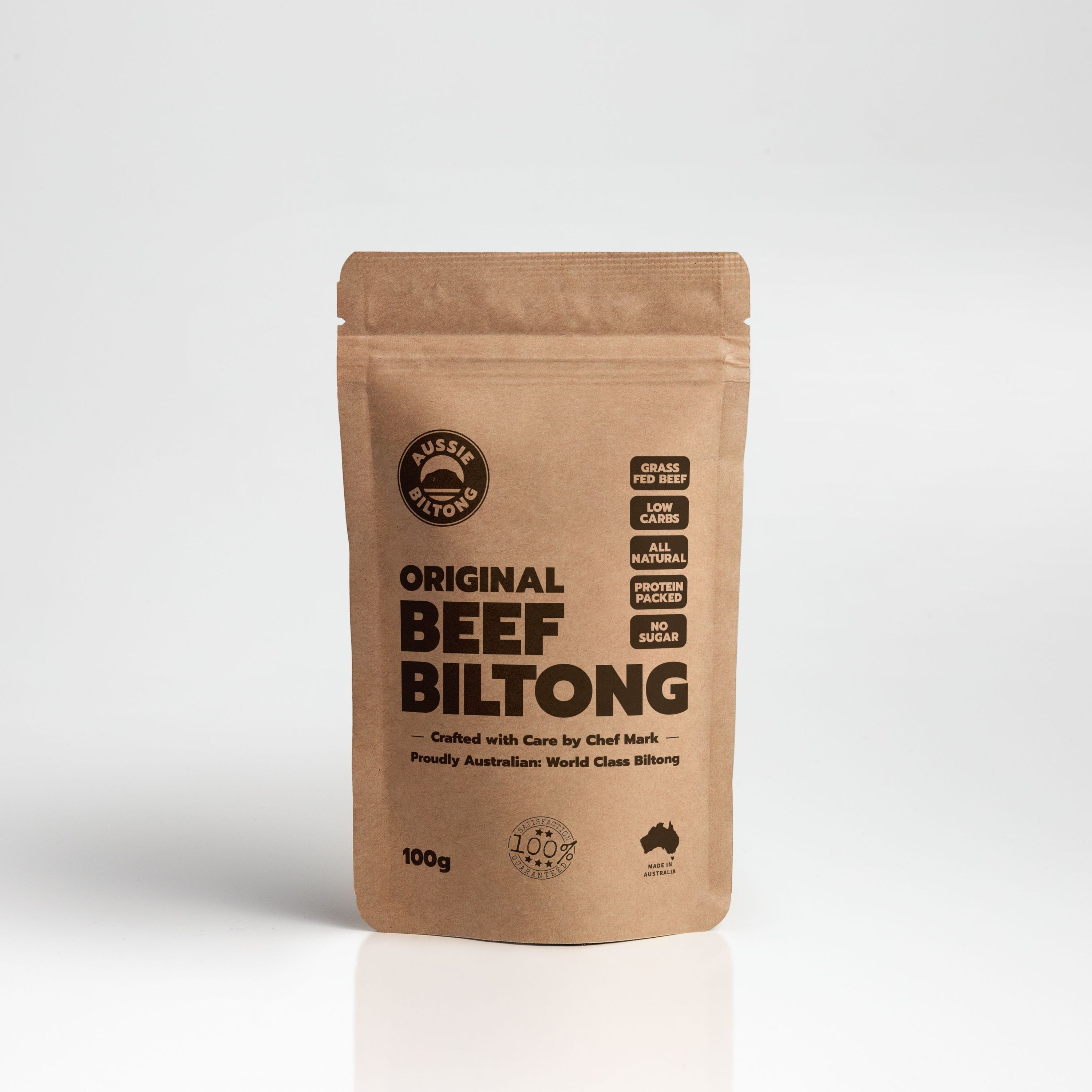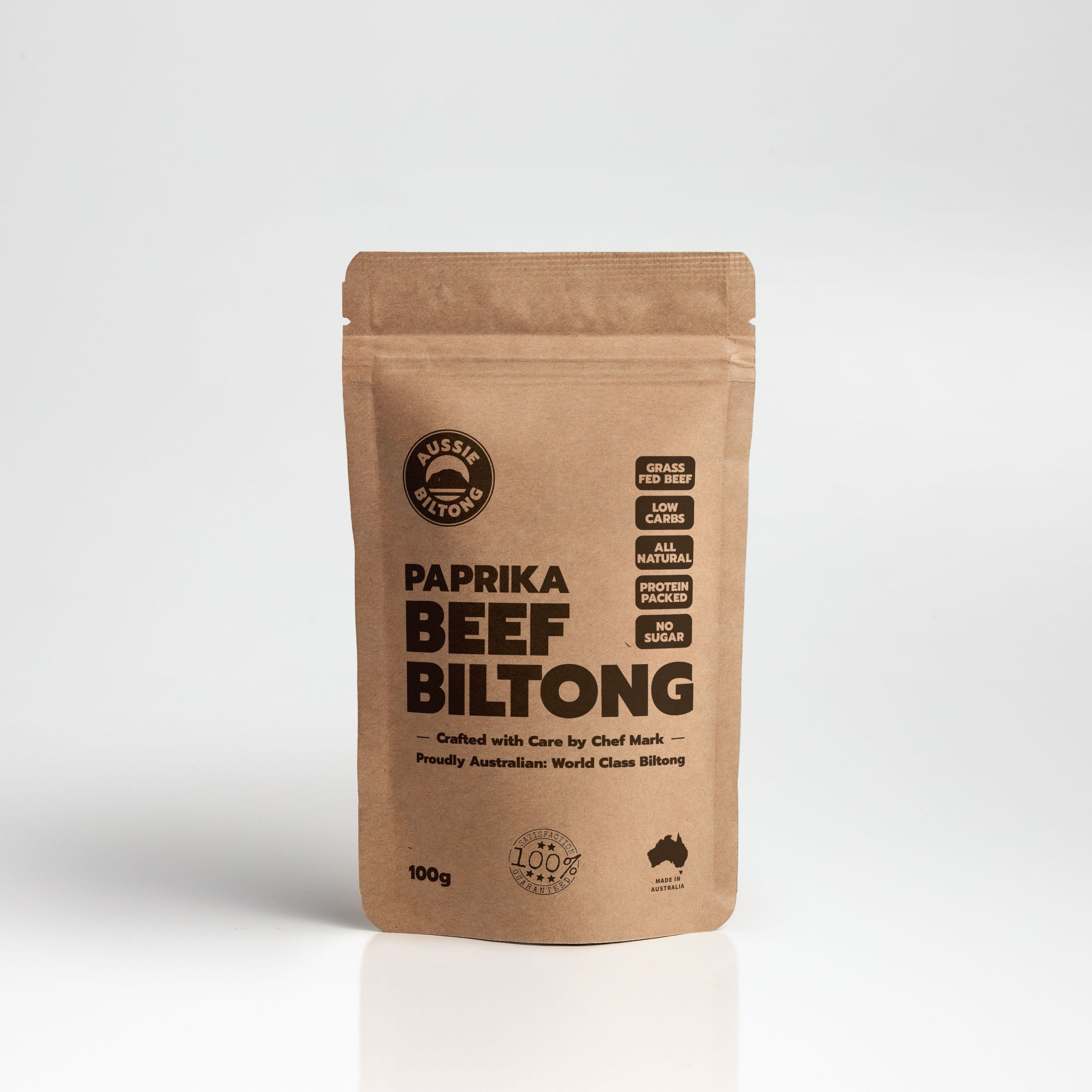

· By Aussie Biltong
How to Store Biltong: Guide to Keep Your Biltong Fresh & Mold-Free
Why Proper Biltong Storage Matters
Biltong isn’t just any dried meat, it’s a carefully air-dried, spiced, and cured snack. Because it’s made without artificial preservatives, how you store your biltong makes all the difference.
Too much moisture, heat, or lack of airflow can cause spoilage fast.
Too little air can trap moisture and ruin it. Storing biltong properly keeps its flavour, texture, and nutritional value intact and stops you from wasting a good batch.

Key Factors to Consider When Storing Biltong
The main enemies of biltong are moisture, heat, and light. Ideally, keep biltong away from direct sunlight and in a cool, dry place. Remember that the “danger zone” for bacteria growth is between 4°C and 60°C, so if it’s humid or very warm, your biltong will spoil faster.
Good ventilation is key. Paper is your best friend for storage, it absorbs excess moisture and lets the meat breathe.
Storage Methods That Work
Short-Term Storage: Paper Bag at Room Temperature
For fresh biltong you plan to eat within a few days, the classic method still works best: place it in a brown paper bag. Keep the bag somewhere cool and dry, and open it daily to let air circulate. This method keeps your biltong fresh for 4–7 days.
Medium-Term Storage: Container or Bowl with Paper Towel
If you want to stretch your biltong shelf life to about two weeks, use a breathable container or bowl lined with a paper towel. Give it a little shake every day to avoid moisture pockets. This keeps the meat dry but not rock hard.
Refrigeration: Fridge Storage for Moist & Opened Biltong
Got biltong that’s still a bit wet or already sliced? The fridge is your friend. Wrap it loosely in paper towel and put it in a container but don’t seal it airtight. Proper airflow stops mould and spoilage. Stored this way, it lasts up to 2–3 weeks.
Long-Term Storage: Freezer & Vacuum Sealing
If you’ve bought in bulk and want it to last, freezing biltong is the best option. Vacuum-seal or wrap your biltong tightly in butcher paper, then freeze. It can stay good for up to 12 months. When defrosting, let it thaw in a well-ventilated area to prevent condensation.
What to Do If Your Biltong Gets Moldy
Can You Remove Mold?
If you notice small white spots on slabs, don’t panic, you can wipe them with a 70/30 vinegar-water mix and let them dry completely before eating. But if your biltong has fuzzy, green, or black mould, especially on sliced pieces, it’s safer to throw it out.
When to Just Throw It Out
Trust your senses. Slimy texture, sour smell, or dark mould are all signs that your biltong has gone bad. Don’t risk it – spoiled biltong can make you sick.

How to Tell If Biltong Has Gone Bad
Good biltong smells savoury and slightly spiced. Bad biltong smells off or sour. Check for discolouration, excessive fuzz, or soft wet patches. If it tastes strange, spit it out. When in doubt, throw it out.
Final Tips & Best Practices
Rotate your stock and eat older biltong first. Avoid sealing it in plastic unless it’s vacuum-packed. Keep it cool, keep it dry, and give it air. Whether you’re storing biltong for a weekend road trip or for months in the freezer, these biltong storage tips will help you store your biltong safely and keep it tasting fresh.

